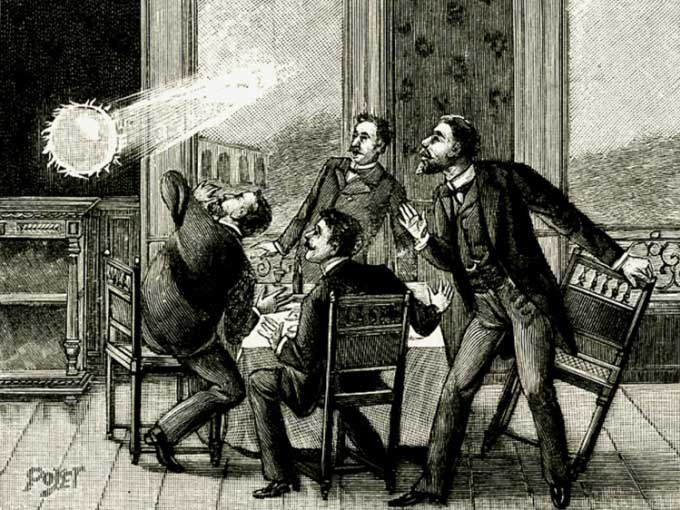Records of ball lightning hitting England 800 years ago
A monk's account of a mysterious Thames phenomenon in 1195 may be the oldest description of ball lightning in England.
Researchers may have discovered the earliest record of a rare weather phenomenon known as ball lightning in the UK. Ball lightning, often accompanied by thunderstorms, is an unexplained phenomenon and is described as a bright spherical object with an average diameter of 25 cm, sometimes up to several meters.
Physics professor Brian Tanner and history professor Giles Gasper at Durham University came across ball lightning while studying a medieval text. Monk Gervase's account at Christ Church Cathedral Priory, Canterbury, is nearly 450 years older than the previous record for ball lightning in England. The new findings were published in the journal Weather of the Royal Meteorological Society.

French illustration showing ball lightning rushing into a room through a window.
In his Chronicle from about the 12th century, Gervase writes that "a miraculous sign had fallen near London" on June 7, 1195. He described a thick and black cloud that released white matter that developed into a sphere beneath the cloud, from which a fiery ball fell towards the river.
The team at Durham University compared the record in the Annals of Gervase with ancient and modern reports of ball lightning.
"Ball lightning is a rare weather phenomenon that we still don't fully understand today. Gervase's description of the white substance escaping from a dark cloud, falling as a spinning ball of fire, then moving moving slightly sideways is very similar to historical and contemporary descriptions of ball lightning," Tanner said.
"If it is true that Gervase is describing ball lightning, we believe it, then this would be the earliest description of this phenomenon in the UK discovered to date," Tanner said. Prior to this record, the oldest report of ball lightning in England was during a major thunderstorm at Widecombe, Devon, on October 21, 1638.
"The focus of Gervase's records is on the Christ Church Cathedral Priory, Canterbury, its disputes with neighboring houses, the Archbishop of Canterbury, the actions of the king and nobles. But he was also concerned. to natural phenomena, from cosmic events and celestial signs to floods, famines, earthquakes," says Gasper.
The research team assessed Gervase's credibility as both author and witness. Before that, they also examined his records of eclipses and descriptions of the image separation of the crescent.
"Gervase appears to be a reliable reporter, so we consider his description of the fiery ball over the Thames on June 7, 1195 to be the first convincing and complete description of ball lightning at any anywhere," said Gasper.
- The girl survived miraculously after being struck by lightning
- Find out the most strange cause of nature
- The camera captures the moment when lightning struck American houses
- Record of 700km of lightning
- Impressive moment with nature's
- Lightning disaster
- Interesting things about lightning
- Image of lightning strikes on space
- Tragedy family with 3 generations died because of lightning being hit at the same place
- More than 90 people died from lightning strikes in India for two days
- Harm of lightning and how to avoid lightning
- Some measures to prevent lightning
 Biography of hero Vu A Dinh
Biography of hero Vu A Dinh History of hematology
History of hematology Who is Mr. Tam Da 'Phuc-Loc-Tho' and what does it mean?
Who is Mr. Tam Da 'Phuc-Loc-Tho' and what does it mean? Unbelievable facts about the history of the oil and gas industry: Gasoline used to be cheaper than water, so abundant that it had to be dumped into the river...
Unbelievable facts about the history of the oil and gas industry: Gasoline used to be cheaper than water, so abundant that it had to be dumped into the river...